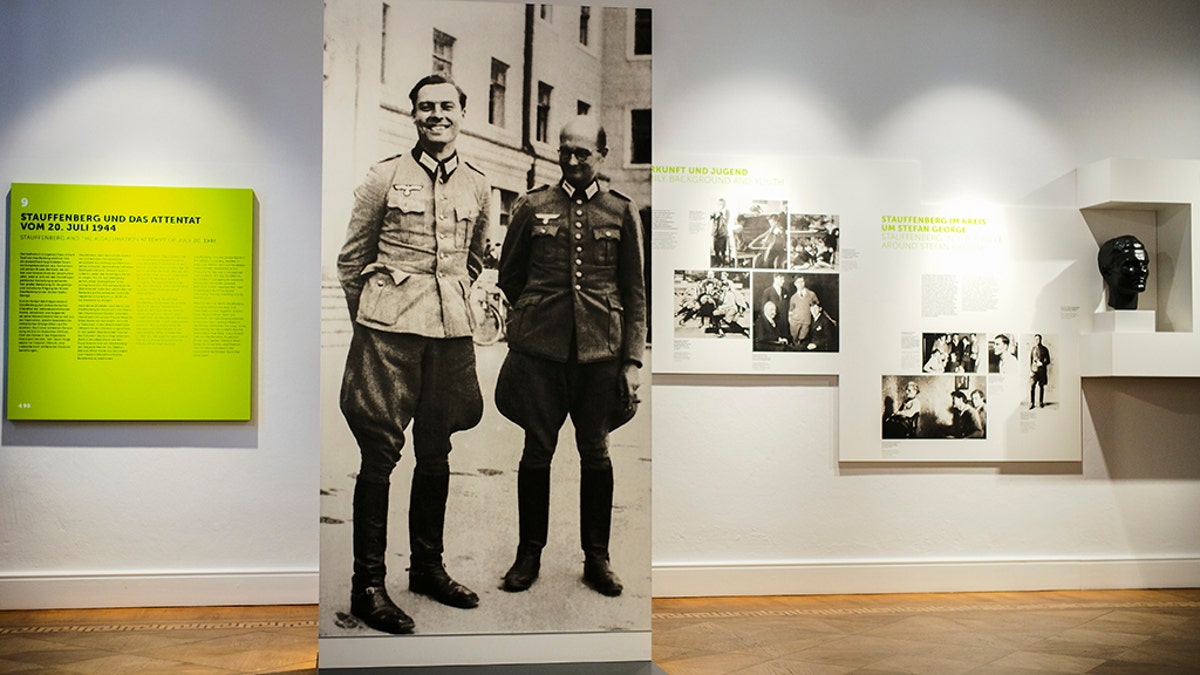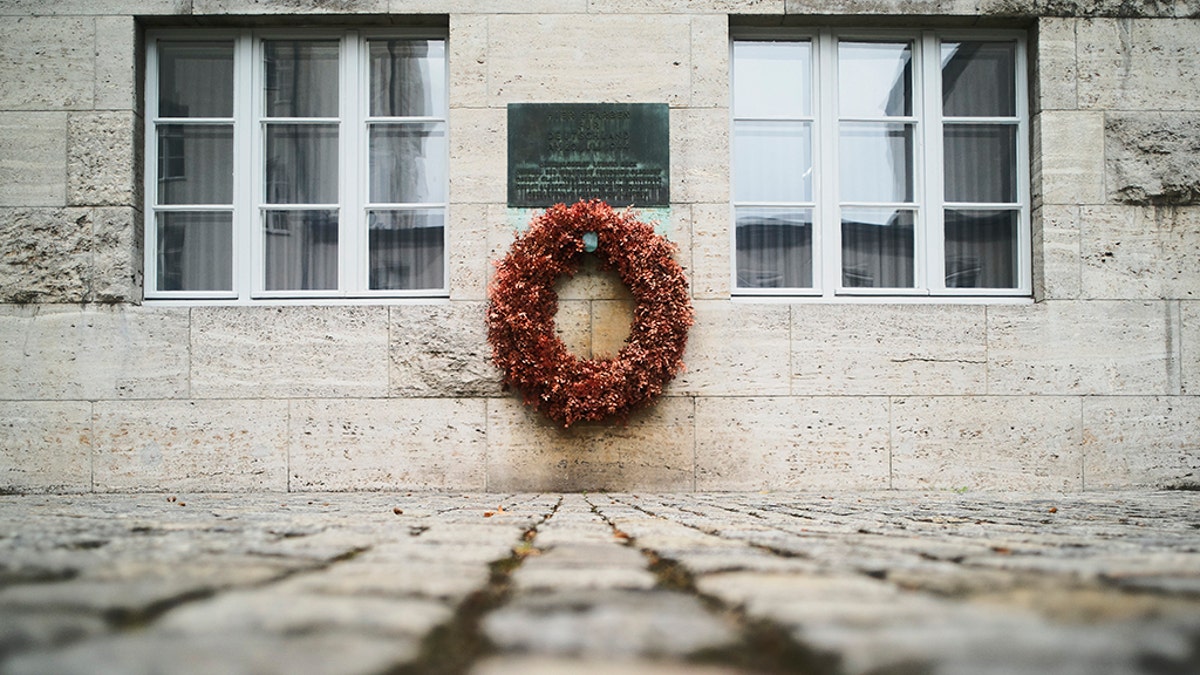Fox News Flash top headlines for July 19
Fox News Flash top headlines for July 19 are here. Check out what's clicking on Foxnews.com
Germany is marking the 75th anniversary of the most famous plot to kill Adolf Hitler by honoring those who resisted the Nazi regime. The resisters, who were stigmatized for decades as traitors, will be honored as pillars of the country’s modern democracy amid growing concerns about resurgence of the far-right.
Chancellor Angela Merkel, who will speak Saturday at an annual swearing-in ceremony for some 400 troops before addressing the memorial event, paid tribute to executed plot leader Col. Claus von Stauffenberg and his fellow conspirators, highlighting their importance to modern Germany.
“Only if we understand our past can we build a good future,” she said.
Von Stauffenberg tried to kill Hitler with a briefcase bomb on July 20, 1944, during a meeting at his headquarters in East Prussia. Hitler escaped the full force of the blast when someone moved the briefcase next to a table leg, deflecting much of the explosive force. The plan collapsed when news spread that Hitler had survived the attack, and von Stauffenberg, along with his fellow plotters, were executed within hours.
GREEK POLICE NAME SUSPECT ACCUSED OF KILLING AMERICAN SCIENTIST

On this Friday, July 12, 2019, a picture of Claus Schenk Graf von Stauffenberg, left, and Albrecht Ritter Merz von Quirnheim is displayed at the exhibition at the German Resistance Memorial Center inside the Bendlerblock building of the defensive ministry in Berlin. Stauffenberg was one of the leaders of the failed assassination to Adolf Hitler one July 20, 1944. (AP Photo/Markus Schreiber)
The plotters had little resonance in the immediate aftermath of World War II when many still viewed them as traitors; they had been painted as turncoats by the Nazis in the aftermath of the failed assassination.
Resistance against the Nazis only came to be “laboriously accepted” over subsequent decades, said Johannes Tuchel, director of the German Resistance Memorial Center, and even in the 1980s, many believed its memory would fade away. Only in 2004 did statistics show that a majority of Germans believe resistance to the Nazis as “important for our political future,” he added.
“Those who acted on July 20 are an example to us, because they showed that they followed their conscience and set their stamp on a part of Germany history that otherwise was defined by the darkness of Nazism,” Merkel said last week in a video message.
Tuchel said von Stauffenberg is a “symbolic figure” of the resistance, an officer who evolved from supporting Nazi policies to becoming a steadfast opponent of the regime after realization of the Holocaust and Hitler’s invasion of the Soviet Union in 1941. He acknowledged that the resistance within Germany was, in overall terms, tiny: 200 to 300 people were involved in the July 20 plot. Germany’s military, on the other hand, had some 8 million men commissioned at the time, and only “a handful or two” of its more than 1,000 generals and admirals participated.

On this Friday, July 12, 2019 photo, a wreath fixed under a remembrance plaque marking the place where several leaders of the failed assassination to Adolf Hitler on July 20, 1944 were shot dead, in the courtyard of the Bendlerblock building of the German defensive ministry, in Berlin. Germany is marking the 75th anniversary of the most famous plot to kill Adolf Hitler. (AP Photo/Markus Schreiber)
But the memorial Tuchel leads, in the Berlin complex where von Stauffenberg worked and was executed, seeks to display the full scope of German resistance to Hitler’s regime after taking power in 1933.
Students in Munich formed the White Rose movement in 1942, distributing pamphlets urging “passive resistance” and were led by siblings Hans and Sophie Scholl, who were executed in 1943. They thus became resistance icons.
Helmuth James von Moltke’s so-called Kreisau Circle simultaneously worked in secret to end the dictatorship in 1940, and carpenter Georg Elser also attempted to kill Hitler and other senior Nazi leaders at an event in Munich in 1938. His plan, however, was thwarted when the Nazi leader unexpectedly left the room minutes before the bomb exploded.
Tuchel admitted that even now, there are shortcomings in historians’ knowledge of the resistance and promised more research in the future into the role of women who opposed the Nazi dictatorship.

On this Friday, July 12, 2019 photo, pictures of co-conspirators of the failed July 20, 1944 attempt to assassinate Adolf Hitler are displayed at the exhibition of the German Resistance Memorial Center inside the Bendlerblock building a part of the German defensive ministry in Berlin. (AP Photo/Markus Schreiber)
This year’s commemoration comes amid large concerns about rising numbers of far-right extremists in Germany, weeks after a regional official from Merkel’s party who supported the chancellor’s welcoming approach to migrants was killed. An extremist with previous convictions for violent anti-migrant crime was arrested as the suspected murderer.
“Today, we are obliged to confront all tendencies that want to destroy democracy – including right-wing extremism,” Merkel said while addressing the modern issue.
CLICK HERE TO GET THE FOX NEWS APP
Analysts worry about measures by far-right groups in Germany and parts of the staunch nationalist Alternative for Germany party (AfD) in taking advantage of the resistance for their own interests. In 2017, a local AfD association came up with an ad claiming that “Sophie Scholl would vote for AfD,” proposing the name of the White Rose leader in an attempt to imply that Merkel’s government is a dictatorship.
Robert von Steinau-Steinruck, head of the July 20, 1944 Foundation, denounced such “attempts at fraudulent labeling, mixing up opposition in democracy with resistance to a dictatorship just because some people don’t like the result of democratic processes.”
Fox News' Morgan Cheung and the Associated Press contributed to this report.





















